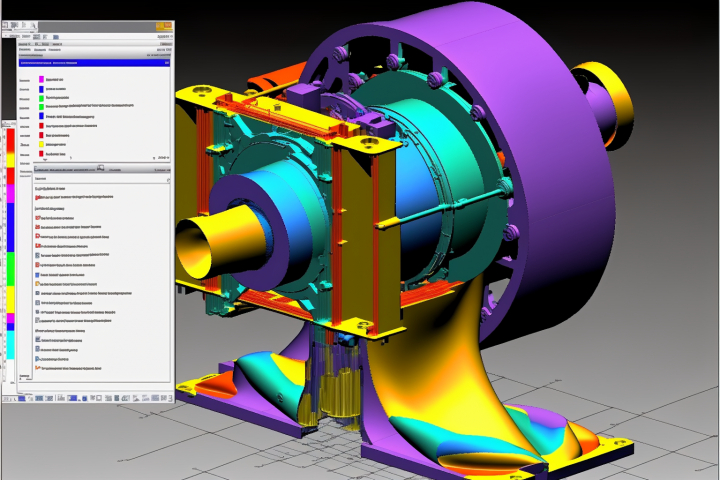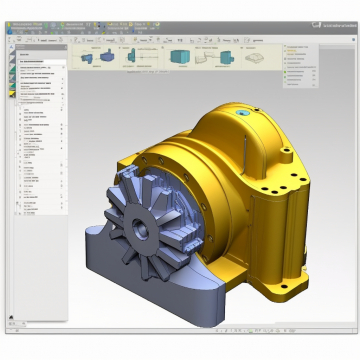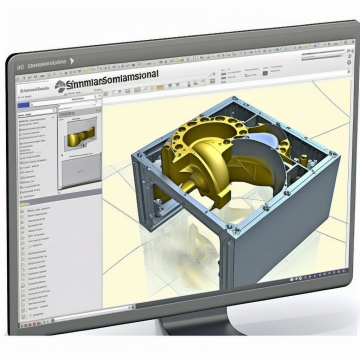SimWise: Comprehensive Simulation Capabilities for Engineers and Designers
SimWise offers an extensive suite of simulation capabilities, enabling users to analyze and optimize their designs effectively:
-
3D Dynamic Motion Simulation: SimWise allows users to model complex interactions such as 3D contact, gears, actuators, and connections between parts. SOLIDWORKS mates are automatically converted to motion joints, ensuring seamless integration.
-
Finite Element Analysis (FEA): SimWise supports various FEA types, including static, normal modes, buckling, steady state and transient thermal, and combined structural thermal analyses. This comprehensive approach enables users to analyze their designs under various conditions.
-
Combined Motion and FEA Simulation: This feature combines dynamic forces from motion simulations with other loading conditions, providing a complete stress profile of the design throughout its range of motion. This holistic view helps users optimize their designs for real-world applications.
-
Optimization: SimWise allows users to utilize SOLIDWORKS dimensions, variables, and simulation-specific quantities as optimization parameters and constraints. By running multiple motion, FEA, or combined simulations, users can achieve design objectives such as minimum weight or maximum speed.
-
Co-Simulation with MATLAB/Simulink: SimWise models can be used as plant models in Simulink, enabling control systems modeled in Simulink to control SimWise motion models. This integration allows users to validate their control systems against mechanical models that incorporate real-world physical effects.
-
Fatigue Life Calculations: With the optional SimWise Durability module, users can determine the fatigue life of any part in the assembly. The stress time history calculated by a combined Motion + FEA simulation is used to assess the longevity of components.
By offering a wide range of simulation capabilities, SimWise empowers engineers and designers to thoroughly analyze their creations, identify potential issues, and optimize their designs for performance, reliability, and durability.
Using SimWise, the CAD to Simscape Multibody workflow becomes: Key Features
To address these challenges, consider adopting a solution that streamlines the integration of CAD models with Simscape Multibody. Such a solution should provide the following capabilities:
-
Seamless CAD-to-Simscape Multibody Conversion: The solution should enable smooth and accurate conversion of CAD models to Simscape Multibody-compatible formats, preserving essential design information such as geometry, mass properties, and assembly constraints.
-
Model Validation and Debugging: The solution should offer tools to help users quickly identify and resolve any issues in the multibody model, ensuring that it accurately represents the intended design and behaves correctly in simulations.
-
Efficient Model Update Management: The solution should provide a robust method for managing changes to the CAD assembly, allowing users to easily update the Simscape Multibody model without losing any simulation-specific information.
-
Bidirectional Data Exchange: The solution should support bidirectional data exchange between the CAD system and Simscape Multibody, enabling users to incorporate simulation results back into the CAD model for further design optimization.
-
User-friendly Interface: The solution should offer an intuitive, user-friendly interface that simplifies the process of integrating CAD models with Simscape Multibody, reducing the learning curve and increasing overall productivity.
By adopting a solution that streamlines the integration of CAD models with Simscape Multibody, engineers and designers can save valuable time and effort, allowing them to focus on optimizing their designs and ensuring optimal performance in real-world applications.
K2 Archives
K2 User
K2 Content
- Instructor Insights and Academic Endeavors: Interactive Physics in Action Written on Friday, 19 August 2022 07:53
- 3D Dynamic Motion Simulation with Advanced Features Written on Friday, 19 August 2022 07:52
- SimWise: Comprehensive Simulation Capabilities for Engineers and Designers Written on Friday, 19 August 2022 07:51





